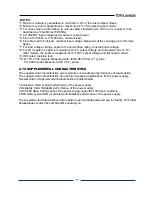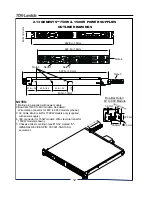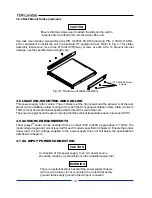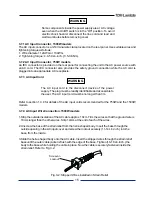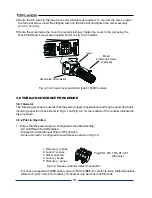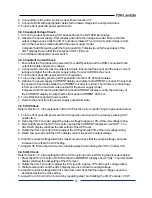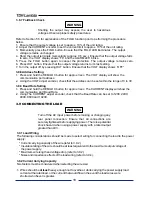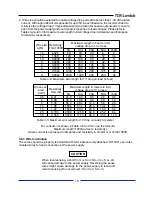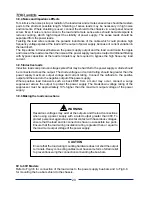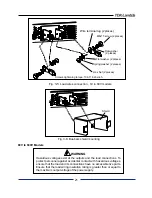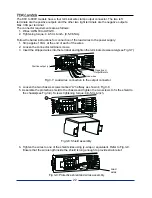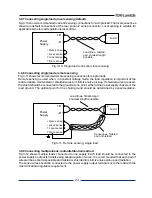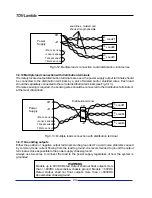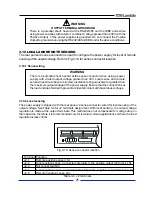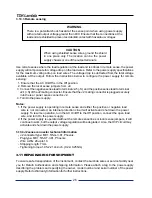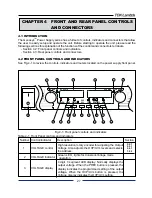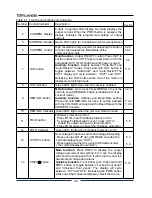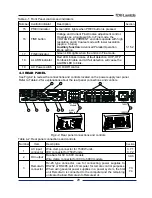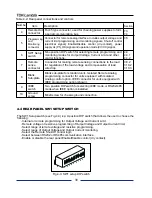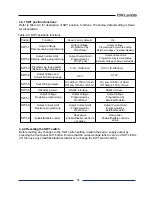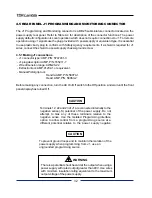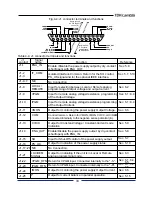
Refer to Section 5.5 for explanation of the FOLD function prior to performing the procedure
below.
1. Ensure that the output voltage is set to approx. 10% of the unit rating.
2. Adjust the CURRENT encoder to set the current limit to approx. 10% of the unit rating.
3. Momentarily press the FOLD button. Ensure that the FOLD LED illuminates. The output
voltage remains unchanged.
4. Short the output terminals momentarily (approx. 0.5 sec.). Ensure that the output voltage falls
to zero, the VOLT display shows “Fb” and the ALARM LED blinks.
5. Press the FOLD button again to cancel the protection. The output voltage remains zero.
6. Press OUT button. Ensure that the output voltage returns to it’s last setting.
7. Turn the output off by pressing OUT button. Ensure that the VOLT display shows “OFF”.
1. Press and hold the REM/LOC button for approx. 3sec. The VOLT display will show the
communication port address.
2. Using the VOLT adjust encoder, check that the address can be set within the range of 0 to 30.
1. Press and hold the REM/LOC button for approx. 3sec. The CURRENT display will show the
communication port Baud Rate.
2. Using The CURRENT adjust encoder, check that the Baud Rate can be set to 1200, 2400,
4800, 9600 and 19200.
3.8.8 Address Setting
3.8.9 Baud Rate Setting
3.9 CONNECTING THE LOAD
18
Shorting the output may expose the user to hazardous
voltages. Observe proper safety procedures.
Turn off the AC input power before making or changing any
rear panel connection. Ensure that all connections are
securely tightened before applying power. There is a potential
shock hazard when using a power supply with a rated output
greater than 40V.
WARNING
WARNING
3.9.1 Load Wiring
3.9.2 Current Carrying Capacity
at least
The following considerations should be made to select wiring for connecting the load to the power
supply:
* Current carrying capacity of the wire (refer to 3.9.2)
* Insulation rating of the wire should be at least equivalent to the maximum output voltage of
the power supply.
* Maximum wire length and voltage drop (refer to 3.9.2)
* Noise and impedance effects of the load wiring (refer to 3.9.4).
Two factors must be considered when selecting the wire size:
1. Wires should be
heavy enough not to overheat while carrying the power supply load
current at the rated load, or the current that would flow in the event the load wires were
shorted, whichever is greater.
3.8.7 Foldback Check
Summary of Contents for TDK-Lambda Genesys GEN100-15
Page 2: ...This page intentionaly left blank ...
Page 6: ...This page intentionaly left blank ...
Page 74: ...NOTS ...








